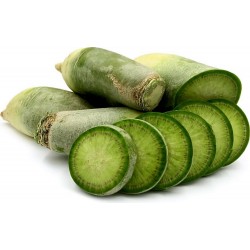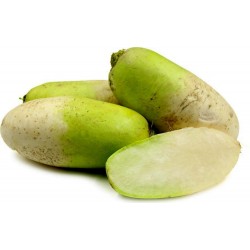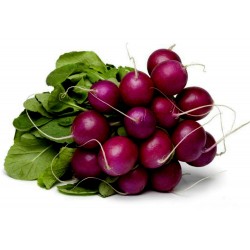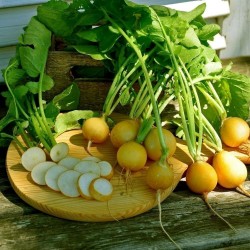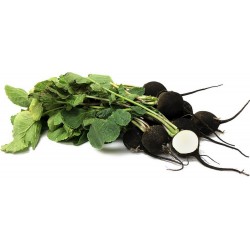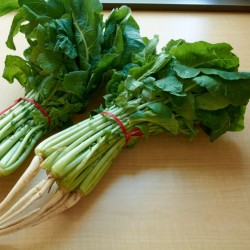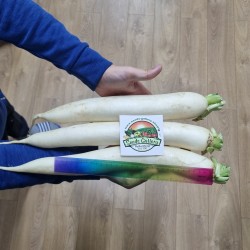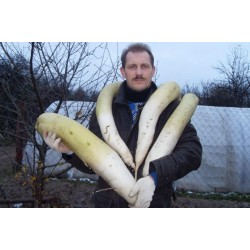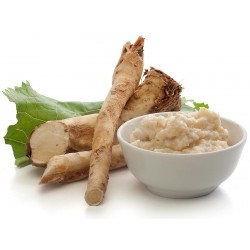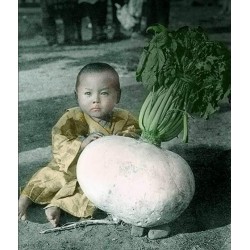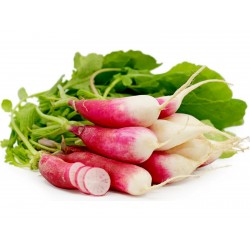Seeds Gallery Com,
5/
5
<h2>Семена Хрен обыкнове́нный, Хрен дереве́нский (Armoracia rusticana)</h2>
<h2><span style="color: #ff0000;">Цена за пакет из 10 семян.</span></h2>
<p><b>Хрен обыкнове́нный</b>, или<span> </span><b>Хрен дереве́нский</b><span> </span>(лат. <span lang="la" xml:lang="la">Armorácia rusticána</span>) —<span> </span>многолетнее<span> </span>травянистое<span> </span>растение,<span> </span>вид<span> </span>рода<span> </span>Хрен<span> </span>(<i><span lang="la" xml:lang="la">Armoracia</span></i>) семейства<span> </span>Капустные(<i><span lang="la" xml:lang="la">Brassicaceae</span></i>). Популярное культурное растение; листья и корни используются в кулинарии и медицине<span class="ts-Переход noprint" title="#Значение и применение"><img alt="" src="https://upload.wikimedia.org/wikipedia/commons/thumb/3/3f/Fairytale_key_enter-2.png/12px-Fairytale_key_enter-2.png" width="12" height="12" /></span>.</p>
<h2><span></span><span class="mw-headline">Распространение</span></h2>
<p>Природный<span> </span>ареал —<span> </span>Европа<span> </span>(за исключением<span> </span>арктических<span> </span>районов),<span> </span>Сибирь<span> </span>и<span> </span>Кавказ.</p>
<p>Завезён и сейчас произрастает также в<span> </span>Азии<span> </span>и<span> </span>Америке.</p>
<p>В природе произрастает по берегам рек, на сырых местах.</p>
<p>Два вида хрена растут в России — хрен обыкновенный (европейская часть России), хрен луговой (преимущественно в Сибири)<sup id="cite_ref-NJ052017_2-0" class="reference">[2]</sup>.</p>
<h2><span></span><span class="mw-headline">Ботаническое описание</span></h2>
<div class="thumb tleft">
<div class="thumbinner"><img alt="" src="https://upload.wikimedia.org/wikipedia/commons/thumb/1/12/Cochlearia_armoracia_%E2%80%94_Flora_Batava_%E2%80%94_Volume_v4.jpg/220px-Cochlearia_armoracia_%E2%80%94_Flora_Batava_%E2%80%94_Volume_v4.jpg" width="220" height="295" class="thumbimage" />
<div class="thumbcaption">
<div class="magnify"></div>
Ботаническая иллюстрация<span> </span>из книги<span> </span>Яна Копса<span> </span><i>Flora Batava</i>,<span> </span><span class="nowrap">1800—1934</span></div>
</div>
</div>
<p>Корень<span> </span>толстый, мясистый.</p>
<p>Стебель<span> </span>прямой, ветвистый, высотой 50—150 см.</p>
<p>Прикорневые<span> </span>листья<span> </span>очень крупные, продолговатые или продолговато-овальные, городчатые, при основании сердцевидные; нижние — перисто-раздельные; продолговато-ланцетные; верхние — линейные, цельнокрайные.</p>
<p>Чашечка<span> </span>длиной около 3 мм;<span> </span>лепестки<span> </span>длиной около 6 мм, белые, коротко-ноготковые.</p>
<p>Плоды —<span> </span>стручочки, продолговато-овальные, вздутые, длиной 5—6 мм; створки сетчато-жилковатые, гнёзда с 4 семенами.</p>
<h2><span></span><span class="mw-headline">Химический состав</span></h2>
<p>Все части растения содержат<span> </span>эфирное масло, имеющее резкий специфический запах и вкус.</p>
<p>Свежий сок корня содержит белковое вещество<span> </span>лизоцим, обладающее антимикробной активностью,<span> </span>аскорбиновую кислоту<span> </span>(0,25 %),<span> </span>тиамин,<span> </span>рибофлавин,<span> </span>каротин,<span> </span>жирное масло,<span> </span>крахмал,<span> </span>углеводы<span> </span>(74 %),<span> </span>смолистые вещества.</p>
<p>В листьях обнаружены аскорбиновая кислота (0,35 %), каротин,<span> </span>алкалоиды; в семенах — жирное масло и алкалоиды.</p>
<p>В корнях хрена много<span> </span>минеральных солей<span> </span>(калия,<span> </span>кальция,<span> </span>магния,<span> </span>железа,<span> </span>меди,<span> </span>фосфора,<span> </span>серы<span> </span>и др.). Выход эфирного масла из корней после<span> </span>ферментации<span> </span>0,05 %, его главной составной частью является<span> </span>аллилгорчичное масло. Кроме того, эфирное масло содержит<span> </span>фенилэтил- и<span> </span>фенилпропилгорчичное масла. В растении содержится также<span> </span>пероксидаза хрена —<span> </span>фермент, широко используемый в молекулярной биологии. В частности, этот фермент используется в иммуноферментном анализе для визуализации реакции, ассоциированной со взаимодействием антиген -антитело (окисление дианизидинового красителя с переводом в окрашенную форму), а также в некоторых методиках определения специфичных белков в образце с использованием<span> </span>люминесценции.</p>
<table align="right" cellspacing="0" cellpadding="2">
<tbody>
<tr bgcolor="#BBDD99" align="center">
<td>
<div class="center">
<div class="floatnone"><img alt="" src="https://upload.wikimedia.org/wikipedia/commons/thumb/1/1c/Armoracia_rusticana_03_ies.jpg/120px-Armoracia_rusticana_03_ies.jpg" width="120" height="105" /></div>
</div>
</td>
</tr>
<tr bgcolor="#BBDD99" align="center">
<td>
<div class="center">
<div class="floatnone"><img alt="" src="https://upload.wikimedia.org/wikipedia/commons/thumb/e/eb/Armoracia_rusticana_05_ies.jpg/120px-Armoracia_rusticana_05_ies.jpg" width="120" height="105" /></div>
</div>
</td>
</tr>
<tr bgcolor="#BBDD99" align="center">
<td>
<div class="center">
<div class="floatnone"><img alt="" src="https://upload.wikimedia.org/wikipedia/commons/thumb/1/1a/Armoracia_rusticana_002.JPG/120px-Armoracia_rusticana_002.JPG" width="120" height="158" /></div>
</div>
</td>
</tr>
<tr bgcolor="#BBDD99" align="center">
<td>
<div>Сверху вниз:<br />корень;<br />разрез корня;<br />цветки;</div>
</td>
</tr>
</tbody>
</table>
<h2><span></span><span class="mw-headline">Значение и применение</span></h2>
<p>На Руси хрен предположительно начали выращивать с IX века, использовали его издавна как пряность и как лекарственное растение. В Европу хрен попал в начале XV века. Особую популярность он приобрёл в Германии и странах Прибалтики. Англичане называли хрен «конским редисом» (англ. <span lang="en" xml:lang="en">horseradish</span>) и использовали его исключительно в лекарственных целях. В настоящее время хрен культивируется во многих странах мира, в основном как овощная культура.</p>
<h3><span></span><span class="mw-headline">Культивирование</span></h3>
<p>К почве хрен нетребователен, но для формирования хороших массивных корней ему необходимы плодородные,<span> </span>суглинистые<span> </span>или<span> </span>супесчаные<span> </span>почвы. Предпочитает в меру влажные, хорошо освещённые места. Размножается отрезками корневища. Избыток<span> </span>азота<span> </span>в подкормке приводит к чрезмерному ветвлению корней. Корни можно выкапывать, начиная со второго года жизни растения. Делать это нужно поздней осенью после отмирания листьев или ранней весной до их появления.</p>
<p>Иногда хрен выращивают как<span> </span>теневыносливое садовое растение, декоративными свойствами у которого обладают как крупные листья, так и цветоносы<sup id="cite_ref-3" class="reference">[3]</sup>.</p>
<h3><span></span><span class="mw-headline">Применение в кулинарии</span></h3>
<p>Наибольшее применение хрен находит как пряно-вкусовая добавка в<span> </span>кулинарии, где используются свежие тёртые или нарезанные корни, а также листья; как<span> </span>пряность<span> </span>при<span> </span>засолке<span> </span>и<span> </span>мариновании<span> </span>огурцов,<span> </span>томатов,<span> </span>грибов,<span> </span>красной свёклы<span> </span>и при<span> </span>квашении капусты. Корни используют для приготовления одноимённой приправы —<span> </span>хрена, а также как часть более сложных смесей, например,<span> </span>соуса,<span> </span>кваса<span> </span>с хреном,<span> </span>хреновухи,<span> </span>хреновины.</p>
<p>Издавна хрен в смеси с другими компонентами является незаменимой приправой к<span> </span>холодцу<span> </span>и рыбному<span> </span>заливному, а также к холодному отварному мясу<sup id="cite_ref-NJ052017_2-1" class="reference">[2]</sup>. Хрен подаётся к жареному мясу, сосискам, копчёному мясу,<span> </span>ветчине, жирной свинине, варёной говядине, языку и<span> </span>ростбифу. Добавляется в различные<span> </span>майонезы, творог,<span> </span>йогурт, квашеную капусту, огурцы и другие овощи. Эти смеси подают к жареному и варёному мясу, рыбе, холодным закускам.</p>
<p>Смесь тёртого хрена со сметаной или же с яблоками служит хорошей приправой к рыбе, особенно<span> </span>карпу,<span> </span>треске,<span> </span>угрю<span> </span>и<span> </span>лососю.</p>
<h3><span></span><span class="mw-headline">Применение в медицине</span></h3>
<table class="plainlinks metadata ambox ambox-content">
<tbody>
<tr>
<td class="mbox-image"></td>
<td class="mbox-text"></td>
</tr>
</tbody>
</table>
<p>В России хрен с давних пор широко применялся в<span> </span>народной медицине. Сок корня обладает выраженными антибактериальными свойствами, используется при<span> </span>гриппе, для полоскания полости рта и горла при<span> </span>ангине,<span> </span>тонзиллите,<span> </span>зубной боли, его закладывают в уши при воспалении и гнойных выделениях. Свежий сок хрена и его водные разведения усиливают выделение соляной кислоты в желудке и эффективны при лечении анацидных<span> </span>гастритов<span> </span>(употребление хрена опасно при воспалительных<span> </span>заболеваниях пищеварительного тракта,<span> </span>печени<span> </span>и<span> </span>почек). В эксперименте было показано, что водный<span> </span>отвархрена оказывает положительное влияние при лечении<span> </span>дизентерии, заболеваний печени и<span> </span>лямблиоза, а также<span> </span>гипертонической болезни. Благодаря высокому содержанию во всех частях растения витамина C хрен применяют как вспомогательное средство при лечении вирусного гепатита. Корень, сваренный в пиве с можжевёловыми ягодами, употребляется при водянке.</p>
<p>В народной медицине хрен применяли как средство, повышающее<span> </span>аппетит, для улучшения деятельности<span> </span>пищеварительного тракта, при<span> </span>отёках, болезнях почек,<span> </span>мочевого пузыря<span> </span>и<span> </span>печени, как<span> </span>отхаркивающее<span> </span>при воспалении<span> </span>верхних дыхательных путей<sup id="cite_ref-NJ052017_2-2" class="reference">[2]</sup>. При<span> </span>цинге, склонности к<span> </span>кровотечениям, физическом и умственном истощении,<span> </span>малярии<span> </span>употребляли настойку корней хрена внутрь, а кашицу в виде компресса как местное<span> </span>раздражающее<span> </span>и<span> </span>отвлекающее<span> </span>средство (несколько слабее<span> </span>горчицы) использовали наружно при<span> </span>радикулите,<span> </span>подагре,<span> </span>ревматизме, а также для лечения гнойных ран.<span> </span>Петром Великим<span> </span>был издан указ, согласно которому в каждом подворье должно быть по несколько четвертей хреновой водки, особенно для тех людей, кто занят физическим трудом. Примочки с тёртым хреном используют при ушибах и грибковых поражениях кожи.</p>
<p>В косметике настоем хрена выводят<span> </span>веснушки, пятна и загар на лице.</p>
<h3><span></span><span class="mw-headline">Пословицы и поговорки</span></h3>
<table class="plainlinks metadata ambox ambox-content">
<tbody>
<tr>
<td class="mbox-image"></td>
<td class="mbox-text"></td>
</tr>
</tbody>
</table>
<ul>
<li>Ефрем любит хрен, а Федька —<span> </span>редьку.</li>
<li>На чужбине и сладкое в горчицу, а на родине и хрен за леденец.</li>
<li>Не рад хрен<span> </span>тёрке, а по ней боками пляшет.</li>
<li>Привет за привет и любовь за любовь, а завистливому — хрену да перцу, и то не с нашего стола.</li>
<li>Пришла редька, да хрен, да книга Ефрем<span> </span><i>(великий пост)</i>.</li>
<li>Семь лет червяк в хрене зимовал, а вкуса не познал.</li>
<li>Та же щука, да под хреном.</li>
<li>Хрен дёшев, да что толку в нём?</li>
<li>Хрен редьки не слаще (хрен редьки не слаще, чёрт дьявола не легче; хрен редьки не слаще, уголь сажи не белей).</li>
<li>Что хрен, что горчица — невелика разница.</li>
</ul>
<h2><span></span><span class="mw-headline">Классификация</span></h2>
<h3><span></span><span class="mw-headline">Таксономия</span></h3>
<p>Вид<span> </span><b>Хрен обыкновенный</b><span> </span>входит в род<span> </span>Хрен<span> </span>(<i><span lang="la" xml:lang="la">Armoracia</span></i>) семейства<span> </span>Капустные<span> </span>(<i><span lang="la" xml:lang="la">Brassicaceae</span></i>)<span> </span>порядка<span> </span>Капустоцветные<span> </span>(<i><span lang="la" xml:lang="la">Brassicales</span></i>).</p>
<h2><strong><span>Cultivation</span></strong></h2>
<p><span>Horseradish is perennial in hardiness zones 2–9 and can be grown as an annual in other zones, although not as successfully as in zones with both a long growing season and winter temperatures cold enough to ensure plant dormancy. After the first frost in autumn kills the leaves, the root is dug and divided. The main root is harvested and one or more large offshoots of the main root are replanted to produce next year's crop. Horseradish left undisturbed in the garden spreads via underground shoots and can become invasive. Older roots left in the ground become woody, after which they are no longer culinarily useful, although older plants can be dug and re-divided to start new plants.[11][15] The early season leaves can be distinctively different, asymmetric spiky, before the mature typical flat broad leaves start to be developed.</span></p>
<h2><strong><span>Culinary uses</span></strong></h2>
<p><span>The distinctive pungent taste of horseradish is from the compound allyl isothiocyanate. Upon crushing the flesh of horseradish, the enzyme myrosinase is released and acts on the glucosinolates sinigrin and gluconasturtiin, which are precursors to the allyl isothiocyanate. The allyl isothiocyanate serves the plant as a natural defense against herbivores. Since allyl isothiocyanate is harmful to the plant itself, it is stored in the harmless form of the glucosinolate, separate from the myrosinase enzyme. When an animal chews the plant, the allyl isothiocyanate is released, repelling the animal. Allyl isothiocyanate is an unstable compound, degrading over the course of days at 37 °C (99 °F). Because of this instability, horseradish sauces lack the pungency of the freshly crushed roots.</span></p>
<p><span>Cooks use the terms "horseradish" or "prepared horseradish" to refer to the grated root of the horseradish plant mixed with vinegar. Prepared horseradish is white to creamy-beige in color. It can be stored for months under refrigeration, but eventually will darken, indicating it is losing flavour and should be replaced. The leaves of the plant, while edible, are not commonly eaten, and are referred to as "horseradish greens", which have a flavor similar to that of the roots.</span></p>
<h2><strong><span>Horseradish sauce</span></strong></h2>
<p><span>Horseradish sauce made from grated horseradish root and vinegar is a popular condiment in the United Kingdom and in Poland.[19] In the UK, it is usually served with roast beef, often as part of a traditional Sunday roast; but can be used in a number of other dishes also, including sandwiches or salads. A variation of horseradish sauce, which in some cases may substitute the vinegar with other products like lemon juice or citric acid, is known in Germany as Tafelmeerrettich. Also popular in the UK is Tewkesbury mustard, a blend of mustard and grated horseradish originating in medieval times and mentioned by Shakespeare (Falstaff says: "his wit's as thick as Tewkesbury Mustard" in Henry IV Part II[20]). A very similar mustard, called Krensenf or Meerrettichsenf, is popular in Austria and parts of Eastern Germany.[citation needed] In France, sauce au raifort is popular in Alsatian cuisine.[citation needed] In Russia horseradish root is usually mixed with grated garlic and small amount of tomatoes for color.</span></p>
<p><span>In the US the term "horseradish sauce" refers to grated horseradish combined with mayonnaise or salad dressing. Prepared horseradish is a common ingredient in Bloody Mary cocktails and in cocktail sauce, and is used as a sauce or sandwich spread. Horseradish cream is a mixture of horseradish and sour cream and is served alongside au jus for a prime rib dinner.</span></p>
<h3><strong><span>Vegetable</span></strong></h3>
<p><span>In Central and Eastern Europe horseradish is called khren (in various spellings like kren) in many Slavic languages, in Austria, in parts of Germany (where the other German name Meerrettich isn't used), in North-East Italy, and in Yiddish (</span><span>כריין</span><span> transliterated as khreyn).</span></p>
<p><span>There are two varieties of khreyn. "Red" khreyn is mixed with red beetroot and "white" khreyn contains no beetroot. It is popular in Ukraine (under the name of хрін, khrin), in Belarus (under the name of хрэн, chren), in Poland (under the name of chrzan), in the Czech Republic (křen), in Russia (хрен, khren), in Hungary (torma), in Romania (hrean), in Lithuania (krienai), in Bulgaria (хрян, khryan), and in Slovakia (under the name of chren). Having this on the table is a part of Christian Easter and Jewish Passover tradition in Eastern and Central Europe.</span></p>
<p><span>In parts of Southern Germany like Franconia, "Kren" is an essential component of the traditional wedding dinner. It is served with cooked beef and a dip made from lingonberry to balance the slight hotness of the Kren.</span></p>
<p><span>In Poland, a variety with red beetroot is called ćwikła z chrzanem or simply ćwikła.</span></p>
<p><span>In Ashkenazi European Jewish cooking beetroot horseradish is commonly served with gefilte fish.</span></p>
<p><span>In Transylvania and other Romanian regions, Red beetroot with horseradish is also used as a salad served with lamb dishes at Easter called sfecla cu hrean.</span></p>
<p><span>In Serbia, ren is an essential condiment with cooked meat and freshly roasted suckling pig.</span></p>
<p><span>In Croatia, freshly grated horseradish (Croatian: Hren) is often eaten with boiled ham or beef.</span></p>
<p><span>In Slovenia, and in the adjacent Italian regions of Friuli Venezia Giulia and nearby Italian region of Veneto, horseradish (often grated and mixed with sour cream, vinegar, hard-boiled eggs, or apples) is also a traditional Easter dish.</span></p>
<p><span>Further west in the Italian regions of Lombardy, Emilia-Romagna, and Piedmont, it is called "barbaforte (strong beard)" and is a traditional accompaniment to bollito misto; while in north-eastern regions like Trentino-Alto Adige/Südtirol, Veneto and Friuli-Venezia Giulia, it is still called "kren" or "cren". In the southern region of Basilicata it is known as "rafano" and used for the preparation of the so-called "rafanata", a main course made of horseradish, eggs, cheese and sausage.</span></p>
<p><span>Horseradish is also used as a main ingredient for soups. In the Polish region of Silesia, horseradish soup is a common Easter Day dish.</span></p>
<h3><strong><span>Relation to wasabi</span></strong></h3>
<p><span>The Japanese condiment wasabi, although traditionally prepared from the wasabi plant, is now usually made with horseradish due to the scarcity of the wasabi plant.[27] The Japanese botanical name for horseradish is seiyōwasabi (</span><span>セイヨウワサビ</span><span>, </span><span>西洋山葵</span><span>), or "Western wasabi". Both plants are members of the family Brassicaceae.</span></p>
<h3><strong><span>Nutritional content</span></strong></h3>
<p><span>In a 100 gram amount, prepared horseradish provides 48 calories and has high content of vitamin C with moderate content of sodium, folate and dietary fiber, while other essential nutrients are negligible in content. In a typical serving of one tablespoon (15 grams), horseradish supplies no significant nutrient content.</span></p>
<p><span>Horseradish contains volatile oils, notably mustard oil, and allyl isothiocyanate.</span></p>
<h3><strong><span>Biomedical uses</span></strong></h3>
<p><span>The enzyme horseradish peroxidase (HRP), found in the plant, is used extensively in molecular biology and biochemistry primarily for its ability to amplify a weak signal and increase detectability of a target molecule. HRP has been used in decades of research to visualize under microscopy and assess non-quantitatively the permeability of capillaries, particularly those of the brain.</span></p>
<h2><em><strong>How to Grow Horseradish from Seed</strong></em></h2>
<h3><strong>Timing</strong></h3>
<p>For first season harvests, start the seeds indoors in January to February and transplant out in April. The goal is to achieve large, fully established roots that can be divided and/or replanted. If time is not pressing, direct sow any time from March into summer. Optimal soil temperature: 7-23°C (45-75°F).</p>
<h3><strong>Starting</strong></h3>
<p>Sow seeds 5mm-1cm (¼-½”) deep in well cultivated, deep soiil. Seeds will sprout in 7-25 days, depending on conditions. Thin or transplant to 20cm (8″) apart in rows 40-50cm (16-20″) apart.</p>
<h3><strong>Growing</strong></h3>
<p>Ideal pH: 6.0-6.8. Well drained, warm soil in full sun is best. Raised beds help with both drainage and warmth. Use 1 cup of complete organic fertilizer for every 3m (10′) of row. Newly emerged leaves are edible, or should be left to mature if growing for the roots. The flower petals are also edible — flowers should be removed before they set seeds, as they will self-sow with enthusiasm.</p>
<h3><strong>Harvest</strong></h3>
<p>For the leaves, harvest as needed, shortly after they emerge, before they become woody. For the roots, harvest November through March. The roots can also be lifted and stored for spring planting to keep the crop going from season to season.</p>
<h3><strong>Diseases & Pests</strong></h3>
<p>In our experience, insects do not cause problems for horseradish.</p>
<h3><strong>Companion Planting</strong></h3>
<p>Horseradish is thought to repel aphids and whiteflies, blister beetles, potato beetles, and some varieties of caterpillar. Its flowers attract beneficial predatory hoverflies.</p>
<h2><a href="https://www.seeds-gallery.shop/ru/glavnaya/%D0%B2%D0%B0%D1%81%D0%B0%D0%B1%D0%B8-%D1%81%D0%B5%D0%BC%D0%B5%D0%BD%D0%B0-Wasabia-%D1%8F%D0%BF%D0%BE%D0%BD%D0%B8%D0%BA%D0%B0-eutrema-japonicum.html" target="_blank" title="Васаби Семена вы можете купить здесь" rel="noreferrer noopener"><span style="color: #008000;"><strong>Васаби Семена вы можете купить здесь</strong></span></a></h2>
VE 117 AR (10 S)
